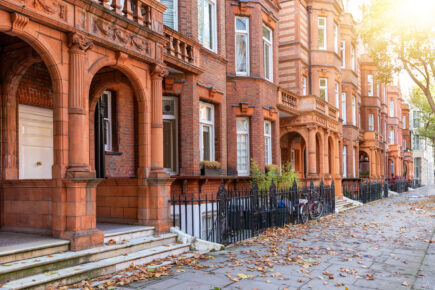The iconic Tate Modern is located in the heart of London and, prior to the pandemic, received on average 500,000-600,000 visitors to its viewing gallery each year. The viewing gallery is situated on the 10th floor of the Tate Modern and provides a free panoramic view of the city for its visitors. Whilst this feature was popular amongst tourists, it was less so amongst the flat owners who lived opposite the museum. B P Collins’ property team examines how they changed the law on private nuisance and what it could mean for property developers in the future.
A group of neighbouring flat owners first took legal action against the Tate in 2017, on the basis that they were suffering continuous intrusion and wanted to prevent the gallery visitors from continuing to view into their homes.
In the first instance, in 2019 a Judge ruled in favour of the Tate that the homeowners could not bring a claim in legal nuisance. It was stated that the flat owners had chosen to live in flats with floor to ceiling glass walls which came ‘at a price in terms of privacy’. It was recommended by the Judge that the residents could take measures such as installing net curtains or keeping their blinds down during the day.
The flat owners tried to appeal the decision in 2020 but were unsuccessful. At the time, the Judge concluded that visual intrusion cannot count as a nuisance. However, in a landmark Supreme Court ruling on 1 February 2023, the flat owners were successful in their claim against the Tate. It was found that the Tate’s viewing gallery itself, was not a common use of its land and was a ‘legal nuisance’ to homeowners. This landmark decision demonstrates that a legal nuisance claim now also protects homeowners against ‘overlooking’.
What does this mean for developers?
Whilst the outcome of this case may worry some developers, the Supreme Court has made it clear that the circumstances where the new law will be applied will be rare. This is because the flat owners in this case were subject to an extreme number of visitors viewing into their residence. In densely populated cities, where buildings are situated in close proximity to one another, someone looking out of their window into a neighbouring building is not a comparable scenario and is unlikely to be considered a legal nuisance.
The Supreme Court ruling should encourage developers to consider more carefully when incorporating features such as roof top gardens on non-residential buildings, and whether it would be considered a ‘normal’ use of its land.
The case also highlighted the issues surrounding the ready availability of CCTV equipment, video doorbells and the constant observation caused as a result. The Supreme Court commented that the ruling could result in a ‘flurry of people looking to use the case and the law will develop’. The ruling confirmed in very clear terms that nuisance can protect against anything that is an interference with the enjoyment of someone’s home. However, the threshold for such a case is set very high.
For further information or advice please call B P Collins’ property team on 01753 889995 or email enquiries@bpcollins.co.uk.

















